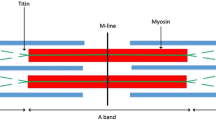Abstract
The effect of pilocarpine hydrochloride on the electroretinogram (ERG) of the isolated frog retina was investigated. The application of pilocarpine hydrochloride on the isolated retina induced a slow cornea-positive sum potential. The pilocarpine hydrochloride stimulation response was temporary and was used as evidence of an electrogenic effect of pilocarpine hydrochloride.
The ERG of the isolated frog retina showed a reversible wave variation as a result of the application of the solution of pilocarpine hydrochloride. Dilute pilocarpine hydrochloride concentrations (10−5 and 10−4 mol) resulted in a slight increase of the amplitude of the b-wave. The b- and DC-wave potential was extensively reduced by applying high pilocarpine hydrochloride concentrations (10−2 mol), whereas the amplitude of the offeffect was increased.
Due to stimulation by dark flashes, pilocarpine hydrochloride solutions of average concentrations lead to a decrease of the on-potential and an extensive increase of the amplitude of the off-effect.
An interpretation is presented of the pilocarpine hydrochloride effect regarding the site of action on the retinal synapses.
Zusammenfassung
Die Wirkung von Pilokarpinhydrochlorid auf das ERG der isolierten Froschnetzhaut wurde untersucht. Pilokarpin-Reizung der isolierten Kaltblüternetzhaut löst eine langsame, korneapositive Summenpotentialschwankung aus. Das Pilokarpin-Reiz-Antwortpotential hat einen transitorischen Charakter und es kann als Nachweis der elektrogenen Wirkung des Pilokarpins gelten. Das ERG der isolierten Froschnetzhaut erfährt durch Pilokarpinlösung eine reversible Konfigurationsänderung. Schwache Pilokarpinkonzentrationen (10−5 und 10−4 M) führen zu einer geringen Amplitudenerhöhung der b-Welle. Starke Pilokarpinkonzentrationen (10−2 M) senken das b- und DC-Wellenpotential, während die Amplitude des off-Effektes eine Potentialerhöhung erfährt. Bei Reizung mit Lichtlücken führen schon Pilokarpinlösungen mittlerer Konzentration (10−3 M) zu einer Verminderung des on-Potentials und zu einer starken Erhöhung der Amplitude des off-Effektes.
Eine Interpretation der Pilokarpinwirkung im Hinblick auf den Angriffsort an den retinalen Synapsen wird versucht.
Similar content being viewed by others
Literatur
Bornschein H, Hanitzsch (1978) Sehen, Sinnesphysiologie III, Bd. 13, 207 in: Physiologie des Menschen von Gauer-Kramer-Jung. Urban u. Schwarzenberg. München-Wien-Baltimore
Bürgi S, Boehm F (1944) Der Einfluß von Atropin und Pilokarpin auf das ERG des Meerschweinchens. Helv physiol pharmacol Acta 2:541
Cervetto L, Mac Nichol EF Jr (1972) Inactivation of horizontal cells in turtle retina by glutamate and aspartate. Science 178:767–768
Dettmar P (1968) Zur elektrogenen Wirkung von ACh an der Vertebratennetzhaut — zugleich ein Beitrag zur Identifikation von ACh als Transmitter an zentralnervösen Synapsen. Habilitationsschrift, Leipzig
Hagins WA (1974) Ass Rev Biophys Bioeng 1: 131 (1972) zit n Stieve
Murakami M, Ohtsu K, Ohtsuka T (1972) Effects of chemicals on receptors and horizontal cells in the retina. J Physiol (London) 227:899–913
Noell W (1954) The origin of the electroretinogramm. Amer J Ophth 38:78–93
Sickel W (1961) Stoffwechsel und Funktion der isolierten Netzhaut, in: Neurophysiologie u. Psychophysik des visuellen Systems. Springer Berlin
Therman PO (1938) The neurophysiology of the retina. Acta Soc Sci fenn NS 2:Nr 1
Walzew VD (1965) Role of cholinergic structures in outer plexiform layer in the electrical activity of frog retina. Z vyss nerv Dejat Pavlova 15:934
Author information
Authors and Affiliations
Rights and permissions
About this article
Cite this article
Tüngler, O., Eichler, J. & Stave, J. Die Wirkung von Pilokarpin an der isolierten Froschretina. Albrecht von Graefes Arch. Klin. Ophthalmol. 217, 225–233 (1981). https://doi.org/10.1007/BF00411153
Received:
Issue Date:
DOI: https://doi.org/10.1007/BF00411153




